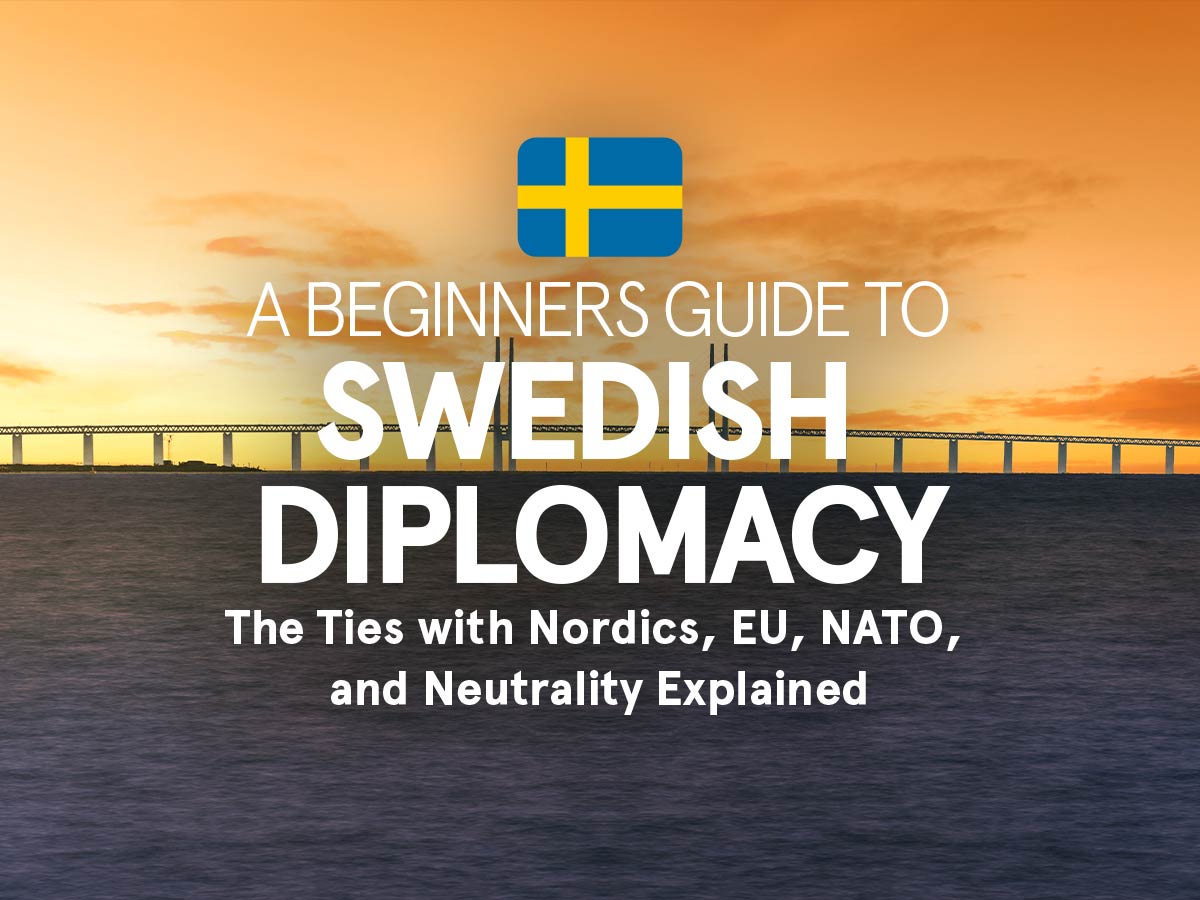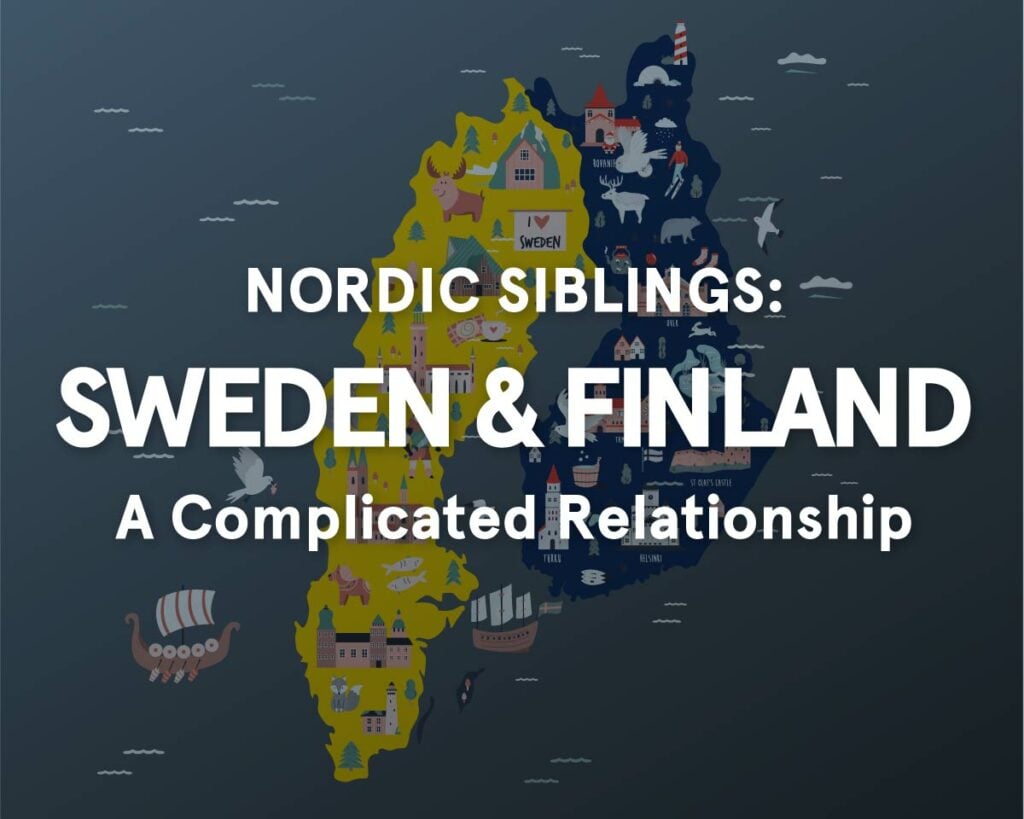Sweden’s location in Northern Europe — wedged between the East and West of the Cold War — and its historical tendency to stay neutral since 1814 has made for some interesting diplomatic balancing acts in recent times. Is it still neutral, is it a member of the EU, and is it part of NATO yet? Let’s look at what Sweden’s role in global and regional politics looks like (as of March, 2024), what allies and diplomatic ties Sweden currently has, and what direction the country is likely to sway in the future.
We’ll begin by looking at where Sweden is located in the world and summarize its diplomatic stance:
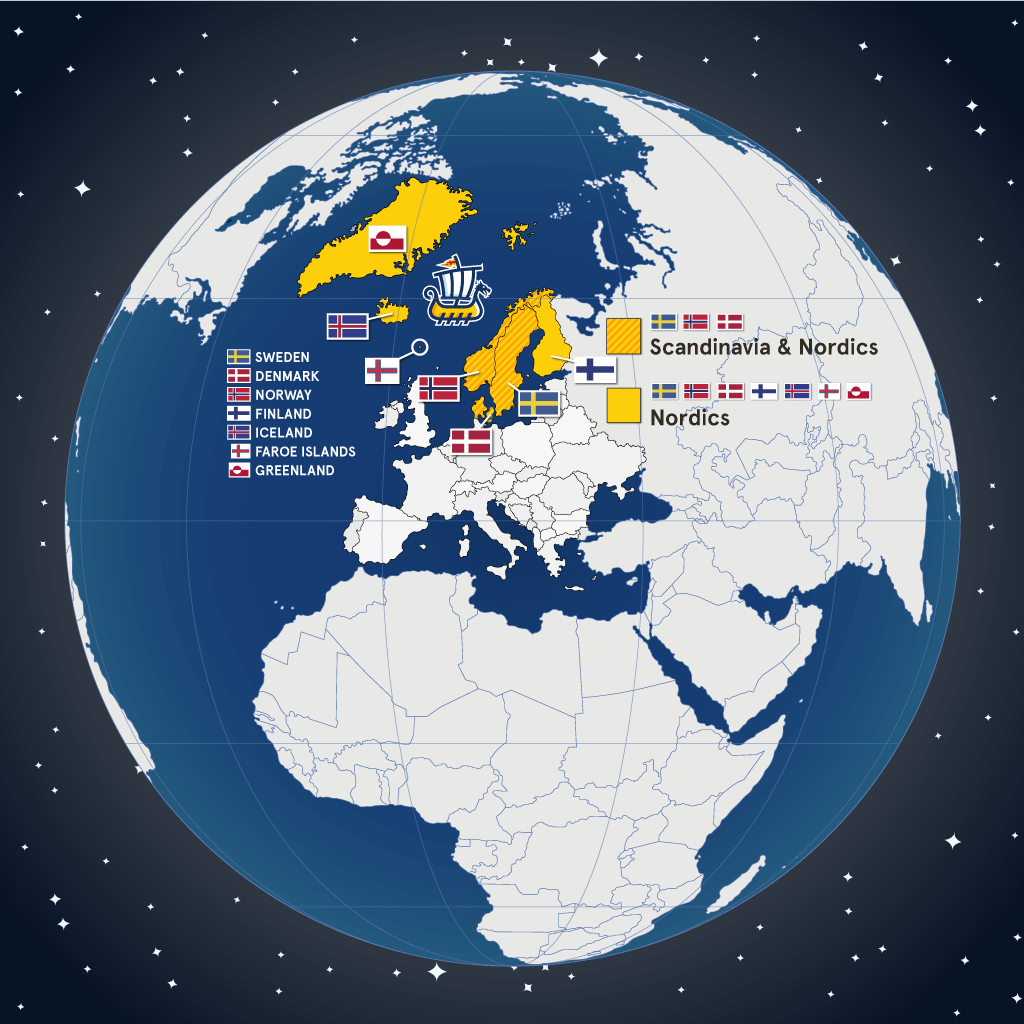
As a Northern European country on the Scandinavian peninsula, Sweden’s closest neighbors are its fellow Nordic countries Denmark, Norway, and Finland. Across the Baltic Sea, it also borders Germany, Poland, Russia, Estonia, Latvia, and Lithuania.
Sweden joined the European Union (EU) in 1995 and the North Atlantic Treaty Organization (NATO) in 2024.
Keep reading to find out why Sweden ended over 200 years of neutrality in favor of joining both a regional union and military alliance.
Sweden: A Nordic Country within Europe and the EU
Sweden is a Northern European (a.k.a. Nordic) country that joined the European Union in 1995, despite a long history of neutrality dating back to 1814. It applied to EEC (EU’s predecessor) in 1961 but still wanted to maintain neutrality, which formally held the country outside the union until the fall of the Berlin wall.
Although Sweden was not able to stay completely neutral during WW2, the country still maintained a policy of neutrality by making smaller concessions to both sides.
This balancing act would also be necessary during the Cold War years, when both Sweden and neighboring Finland were under constant pressure from Soviet Russia to stay outside the US sphere of influence, while the USSR was simultaneously making plans to invade both countries in hypothetical military operations that never came to be.
When Sweden Joined the EU and the Reasons Why
Sweden joined the European Union on 1 January 1995. The decision was made in a referendum held on 13 November 1994, in which 52.3% of Swedish voters supported membership. Sweden had been an associate member of the EU since 1 July 1991, and the country’s application for membership was first submitted in February 1992.
However, it was not approved by the European Commission until 1995 because of opposition from France.
Results of the Popular Vote on Swedish EU membership (November 11, 1994):
Source: the Swedish Riksdag (Parliament)
Sweden’s entry into the EU was controversial, as many Swedes were opposed to joining a union that they saw as dominated by Germany.
Upon joining the union, the country also had to abandon its policy of neutrality, which had been in place since 1814.
Why Has Sweden Not Joined the Euro?
Sweden might be part of the EU, but has not embraced the common Euro currency yet, and there are a few reasons behind it:
- Sweden has been able to maintain a stable economy and currency due to its strong export sector.
- Joining the Euro would mean giving up some control over the Swedish Krona
- It is not clear if the benefits of joining would outweigh the costs.
- There is some concern that adopting the Euro could lead to inflation and higher interest rates in Sweden.
When Sweden became a member of the European Union in 1995, the Euro did not yet exist as a currency (but it had been planned to launch since 1991).
The Euro was finally launched as a currency in 1999, and when the Swedes voted on whether or not to adopt it as a currency in 2003, 55.91% voted “No”.
Results of the Popular Vote on Swedish Eurozone membership (September 14, 2003):
Source: the Swedish Riksdag (Parliament)
There was a lot of public debate on the issue, with the main concern being that adopting the euro would mean giving up some of Sweden’s sovereignty.
So the country ultimately decided not to adopt the euro, and since then there has been no real movement in the matter, neither politically nor generally speaking.
Will Sweden Adopt Ever the Euro?
The only way Sweden will join the Eurozone is if the Swedish population agrees to do so through a general vote, but that’s not likely to happen anytime soon as support for such a measure is very low following a period in which many Eurozone countries experienced recessions during the 2010s.
While economists agree that it could be financially beneficial for Sweden to join the Eurozone (as it would make trade with member countries easier and less costly), a majority of the population still disagrees with the idea — with 63.5% of Swedes against adopting the Euro according to a November 2021 poll by SCB.
In general, there is also a lot of opposition to adopting the Euro in Sweden, even in the bigger cities (that overwhelmingly wanted to adopt the Euro in 2003), as many people believe that it would be harmful to the country’s economy in light of recent financial history in the Eurozone.
It is likely that the public debate on this issue will continue in the years to come, but as long as the Swedish economy and currency hold up okay, and there is continued cooperation with Sweden’s European neighbors — Swedes will likely see very little reason to change anything.
Sweden: The Newest Member of NATO as of 2024
Sweden ended over 200 years of neutrality when it applied to become a member of NATO on 18 May 2022 as a direct response to Russia’s invasion of Ukraine. Though most members quickly approved Sweden’s application, Hungary and Turkey were the only NATO countries to stall their decision to ratify the application for as long as they possibly could in order to “use” the situation to their political advantage as long as possible.
Whether the authoritarian rulers (some may even say dictators) of Turkey and Hungary actually got anything out of the stalling remains to be seen, but the drawn-out application process finally ended on March 7 2024 when Sweden could join the alliance officially.
Despite the Hungarian government repeatedly assuring everyone that they wouldn’t be the last country to approve Sweden’s application, they were indeed the last country to sign and ratify the application when they did so on 5 March 2024.
After waiting for nearly two years, the Prime Minister of Sweden finally received a heartfelt and warm welcome into the alliance by US President Biden during his State of the Union speech on the same day Sweden formally joined NATO.
So why did Turkey and Hungary stall Sweden’s NATO application?
It’s hard to speculate why Turkey and Hungary decided to stall Sweden’s NATO application, but based on what global media has reported the main reason seems to be that Sweden has criticized both Turkey and Hungary for anti-democratic practices, including human rights abuses, which — perhaps not so surprisingly — has not been popular among either country’s leadership.
Let’s look at what representatives from each country has said:
In January 2024, lawmakers from Hungary’s governing party (Fidesz) boycotted a parliament session in which a vote on Sweden’s NATO bid was to be discussed. Fidesz cited what it called “unfounded Swedish allegations that it has eroded democracy in Hungary” as the reason why Sweden’s NATO bid had been stalled and delayed by the Hungarians.
The view that Hungary can no longer be considered a full democracy is not only held by Sweden, however, as the Members of the European Parliament (MEPs) condemned the “deliberate and systematic efforts of the Hungarian government” to undermine European democratic values.
Turkey has also strongly objected to the fact that Sweden offers its citizens free speech, which for example has enabled multiple book burnings during 2023 in protests around the country against religious extremism (including burnings of the Quran). Interestingly, it hasn’t been Swedish citizens who have been burning books, instead, it has been a Danish far-right politician and an Iraqi national who have been behind the controversial protests.
So Why Has Sweden Not Applied to NATO Until Now?
There are two main reasons why Sweden did not apply to become a member of NATO until May 2022:
- Sweden was committed to neutrality for more than 200 years, and being a part of NATO would mean giving up that neutrality
- Sweden has felt that NATO is more focused on the interests of the United States and other larger member countries, than on the interests of smaller countries like Sweden
The Swedish government’s position before Russia invaded Ukraine was that the country should not join NATO because it could lead to increased tensions with Russia and violate Sweden’s policy of neutrality.
There have also been supporters of Sweden joining NATO, who usually argue that joining NATO would better protect Sweden from potential threats from Russia — which in hindsight seems to have been spot on.
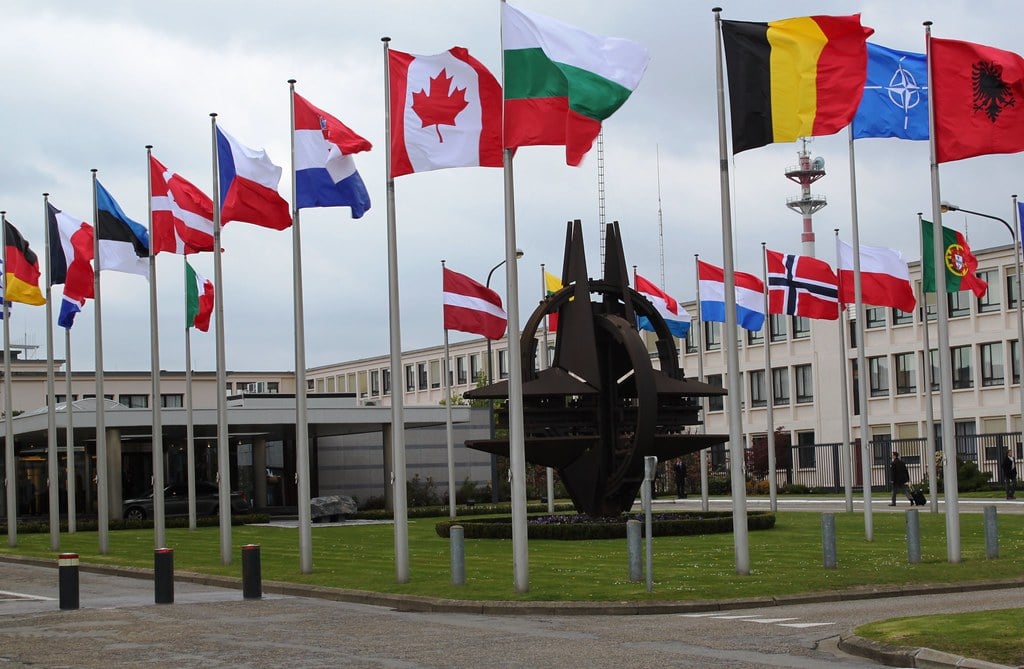
“NATOs hovedkvarter” by Utenriksdept is marked with CC BY-ND 2.0.
Why Did Sweden Ultimately Decide to Join NATO?
Previously, there was no easy answer to whether Sweden should become a member of NATO due to many factors, including Sweden’s 200+ years of neutrality, the delicate location in between “the West” and “the East”. But with the Russian invasion of Ukraine in 2022, any perceived negatives were quickly outweighed by the perceived positives.
Opponents to joining NATO argued that membership would compromise Sweden’s neutrality and independence, as well as provoke Russia needlessly when there seemed to be a status quo of peace in the region.
But with a Russia that is not respecting its neighbors’ sovereign territories, and is trying to expand its territory by preying on non-NATO-states specifically, Sweden can no longer afford to be outside a larger military alliance.
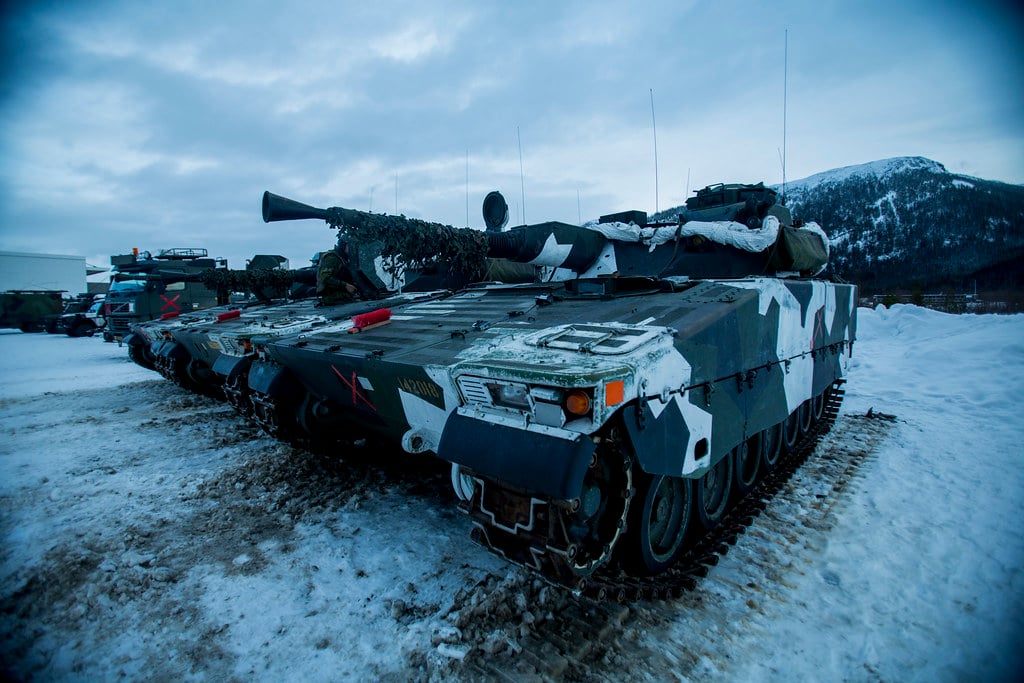
“160229-M-IJ860-026” by U.S. Department of Defense Current Photos is marked with CC PDM 1.0.
Common arguments in support of Sweden joining NATO:
- NATO membership would provide Sweden with increased security and stability.
- NATO is a powerful military alliance that can provide Sweden with defense if it is attacked.
- NATO membership would allow Sweden to cooperate more closely with other NATO members, which could improve intelligence sharing and coordination on important issues.
- It would be beneficial for the Swedish economy to join NATO. This argument is based on the assumption that Sweden would receive a commensurate increase in security and stability.
- Joining NATO could benefit Sweden in terms of more opportunities for profit from trade and investment.
- Joining NATO would be good for Sweden’s international reputation.
- Sweden is a small country, but has a thriving industrial sector that could greatly benefit from an opportunity to, for example, sell (even) more military equipment and supplies to other NATO members.
- Joining NATO would help improve the relationship between Sweden and Europe further.

“180830-M-XY415-936” by U.S. Department of Defense Current Photos is marked with CC PDM 1.0.
Common arguments against Sweden joining NATO:
- It could lead to increased tensions with Russia and make the country more vulnerable to an attack (this argument is significantly weakened by Russia’s invasions of Ukraine in 2014 and 2022).
- In order for Sweden to join NATO, the country would have to make costly financial investments in the form of membership dues and increased military spending.
- Sweden would have to renegotiate its relationships with other Nordic countries and the European Union if it joined NATO.
- NATO is not considered the most important institution in Europe (the EU is, which Sweden is already a part of).
- Sweden already enjoys very good relations with Europe through its membership of the European Union, which otherwise is a strong reason for many other countries like Ukraine and Georgia to join.
- Joining NATO before Finland does could put Finland in danger and be seen as abandoning the Nordic neighbor Sweden many times has pledged to stand by in the NATO question.
- Swedish military technology and industry is already quite powerful for its size, as such there isn’t a pressing need for weapons technology from other NATO countries
- Sweden doesn’t need to join NATO in order to be secure (this argument was significantly weakened by Russia’s invasions of Ukraine in 2014 and 2022)
- Sweden would lose its independent voice in the world if it joins NATO.
- Sweden is a neutral country and shouldn’t participate in conflicts of other countries.
- Sweden would not be able to control what NATO does with its military equipment.
Here is how the Swedish population stood on the issue of joining NATO in March 2022 (two months before the country’s NATO application was handed in):
Demoskop March 1 2022 poll
Novus March 4 2022 poll

Sweden’s Relationship with NATO Before its Application
Outside of a full-fledged NATO membership, Sweden has also been able to maintain its neutrality as part of NATO’s Partnership for Peace (PfP) program since 2014, allowing Sweden to cooperate with NATO without being an official member of the alliance.
Nordic cooperation is also an important part of Swedish foreign policy, and as such Sweden also has close ties and treaties with Norway and Denmark (both members of NATO).
The different NATO partnerships:
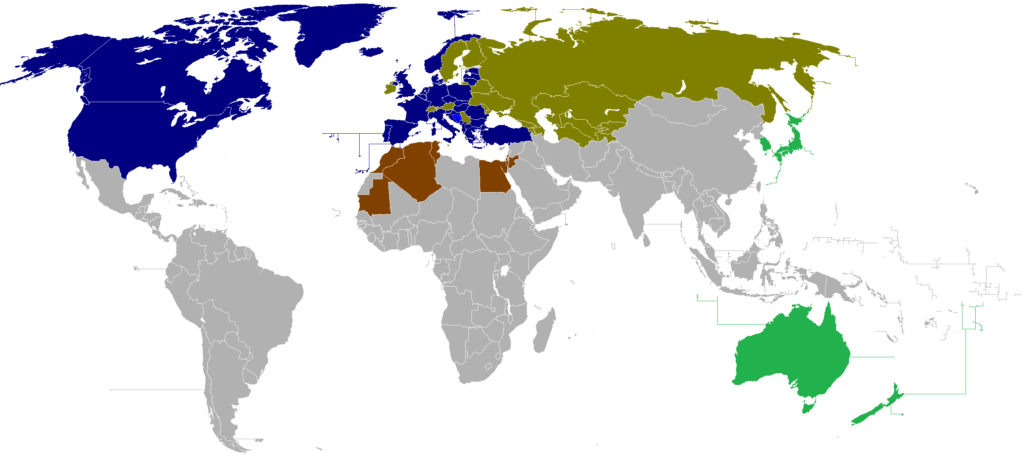
So even though Sweden has pursued a policy of neutrality for a long time, current world affairs have forced it to align itself more clearly with both the rest of Europe, as well as other Western democracies that make up the core of NATO.
Through the PfP, Sweden is also a member of the Euro-Atlantic Partnership Council (EAPC) – which essentially means the political framework that provides the opportunity for cooperation between Sweden and NATO.
The Partnership for Peace is a way for NATO to build relationships with countries that aren’t full members of the alliance, and it offers these countries access to NATO training and exercises.
Sweden has also been involved in other military partnerships. In 2001, Sweden joined the European Union’s Battlegroup program, which organizes military units from different EU member states into temporary combat groups that can be deployed anywhere in the world. And in 2016, Sweden signed a defense cooperation agreement with Finland that allows both countries to share intelligence and conduct joint military exercises.

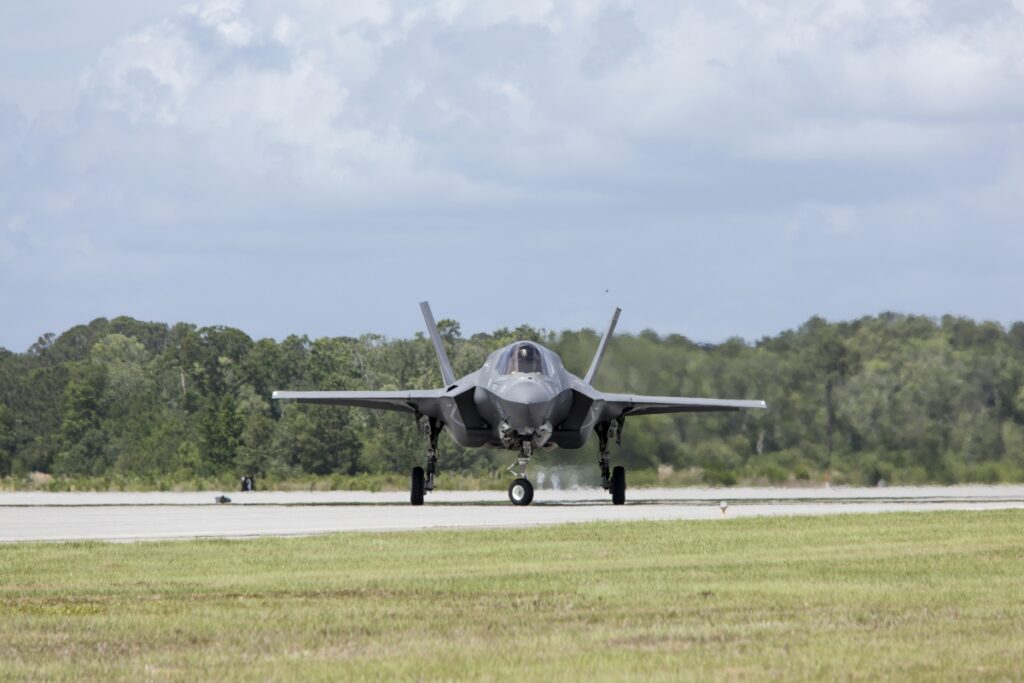
Are the Nordic Countries Finally Allied Again?
When Sweden and Finland joined NATO after the Russian invasion of Ukraine in 2022, all Nordic Countries are now formally allied with each for the first time since the Kalmar Union when they all had the same ruler.
That said, they have still had plenty of close collaborations and mutually benificial agreements over the past century on top of NATO. For example, Sweden, Finland, and (to some extent) Norway have a defensive alliance through EU’s Common Security and Defence Policy (CSDP).
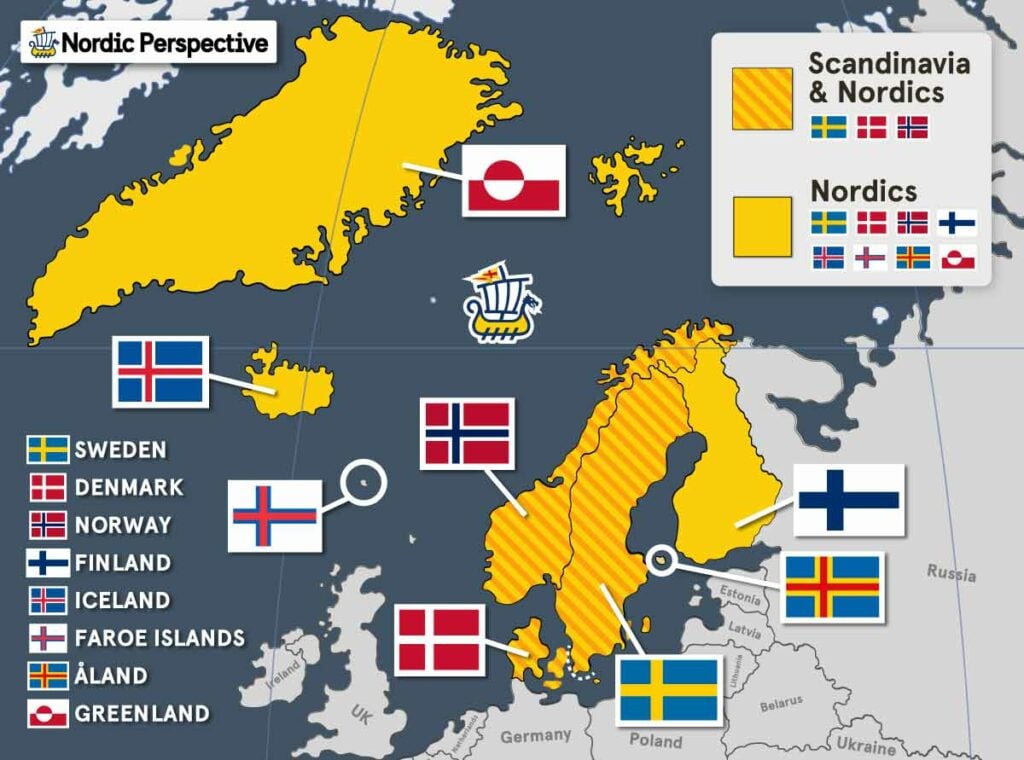
The five Nordic countries of Denmark, Finland, Iceland, Norway and Sweden have also signed a Nordic Defence Cooperation (NORDEFCO) framework, meant to improve defence cooperation and coordination between the Nordic countries in order to better respond to potential threats and challenges.
The purpose of NORDEFCO is for Nordic countries to cooperate on defence issues, share information and expertise, and develop joint capabilities. NORDEFCO has been active in areas such as cyber security, joint training and exercises, and defence procurement.
The Nordic countries are also part of the Nordic Council and Nordic Passport System, permitting free movement for all citizens within Nordic countries.
The Nordic Council is a cooperative body of the five Nordic countries (Denmark, Finland, Iceland, Norway and Sweden), established in 1952 to promote cooperation between the countries on issues such as politics, culture and economic development.
The Council also has a parliamentary assembly made up of members from the national parliaments of each country. The main task of the assembly is to pass decisions that will be implemented by the Council’s executive body, the Nordisk Ministerråd.
Is Sweden Allied With Finland?
Sweden is officially allied with Finland when the two countries joined NATO in 2022 and 2024 respectiv ely, and they had both signed EU’s Common Security and Defence Policy before that. On top of the formal alliance, the two countries have had a strong history of cooperative relationship for centuries, and Finland and Sweden recently deepened their military cooperation formally as well.
The Swedish Parliament recently passed an Act in the fall of 2020 (2020:782), which empowers the Government to decide on providing and receiving operational military assistance within the framework of the defence cooperation between the two countries.
While the Riksdag still needs to vote on aid for Finland against an armed attack, the situation is different for emergencies or situations involving breach of Finnish territory, as the new law designates the government to be able to both respond and act quickly in such a case.
Are Norway and Sweden Allies?
Norway and Sweden are allies in NATO, and they also cooperate militarily with both countries having signed the Common Security and Defence Policy of the European Union — though Norway is not part of the EU and as such is not a voting member of the treaty.
On top of this, Norway and Sweden have a special relationship that is often described as being akin to siblings — having even been part of a personal union headed by the Swedish King in the 19th and early 20th centuries.
Today we generally make fun of each other a lot, but always in a friendly, and well, sibling kind of way.
Have the Nordic Countries Ever Been United Politically Before?
The Nordic countries of Denmark, Finland, Iceland, Norway, and Sweden have not been united in a political or economic sense, but they do share a lot of similar cultures and values both historically and presently.
The countries share a political system that is sometimes called the “Nordic Model”, and which stands out from other western nations partly because of their unique social welfare systems.
The Nordics have never been united as one single country. However, there have been times when the Nordic countries have worked together on various projects over the years, including the Nordic Council – an intergovernmental organization that promotes cooperation between the countries. The council was founded in 1952 and meets regularly to discuss issues such as trade, culture, and environmental protection.
That said, the Scandinavian region (Sweden, Denmark, Norway) was partly united politically under one government in the 14th century by house Bjälbo, and then completely by the mother of Olaf II (the last Bjälbo King), Margarete I (and her descendants) between 1376-1523 (in what was called the Kalmar union).
You can read more about this period in this article that discusses whether or not Scandinavia is one or many countries.
Is Sweden Still Considered Neutral?
Sweden had an official policy of neutrality up until May 2022, which meant that it would not take sides in any disputes. With the looming threat of an increasingly aggressive Russian state, the Swedish government decided to give up its neutrality and apply for membership in NATO.
It is also part of the European Union, and has signed the Common Security and Defence Policy (CSDP) which mandates the country to aid other members in case of an attack on their soil.
That said, Sweden has not been actively involved in any wars or military conflicts since 1814, even if it took part in peace-keeping missions both within the UN and NATO frameworks (and only managed to stay neutral during World War 2 by aiding both sides behind closed doors).
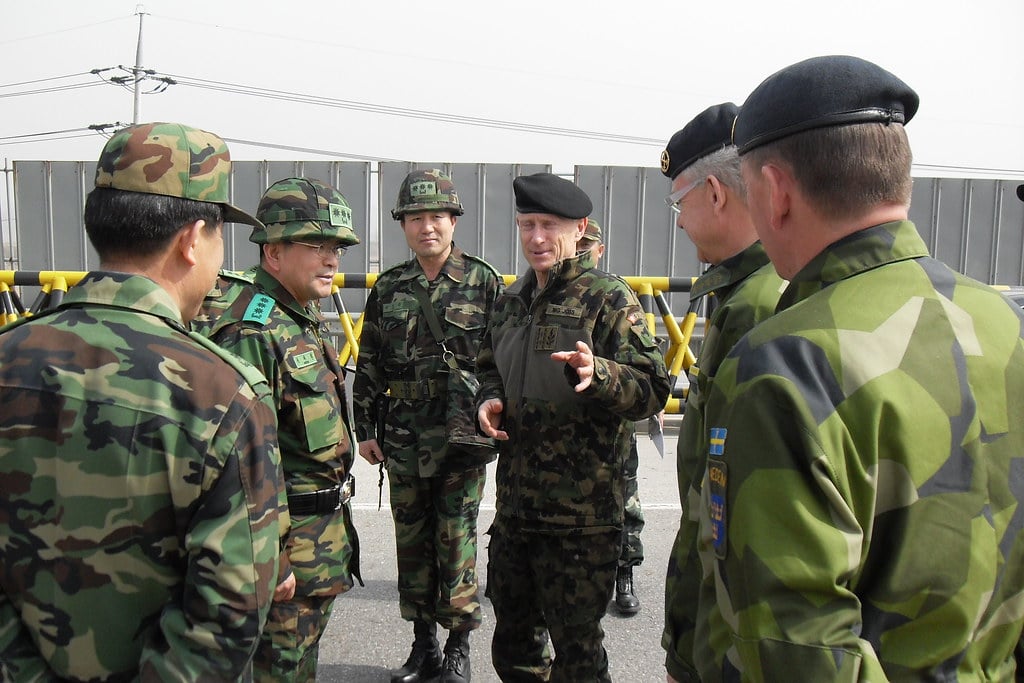
“NNSC Observe Exercise” by UNC – CFC – USFK is marked with CC BY 2.0.
Why was Sweden Neutral Historically?
Sweden had a long history of neutrality, which is based on the country’s desire to maintain its independence and to avoid involvement in the many European conflicts there has been over the years.
Sweden was neutral in every major European conflict since the Napoleonic Wars, and this policy helped to make the country one of the most peaceful and stable in the world.
Sweden’s neutrality was also based on its strategic Cold War location between the East and West, making any formal allegiance to either precarious, to say the least.
How Did Sweden Stay Neutral in WW1?
Sweden was able to stay neutral during WWI because of its geographic location and its policy of armed neutrality. Sweden’s location on the Scandinavian Peninsula meant it was surrounded by initially neutral countries, and Sweden had a policy of armed neutrality which meant that it would not enter into the war unless it was attacked. This policy allowed Sweden to trade with both sides in the war, and it helped to keep the country out of conflict.
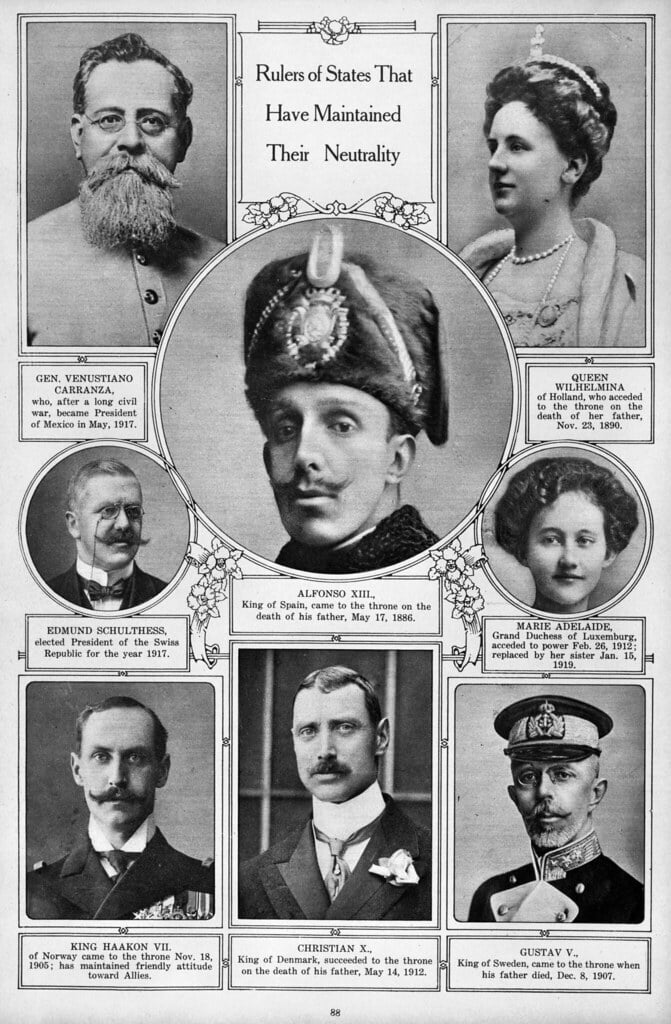
In the rest of the Nordic region, Norway and Denmark both declared themselves neutral along with Sweden, but Finland – then part of the Russian Empire – fought on the side of the Central Powers, Germany and Austria-Hungary.
The war led to increased militarization and a greater focus on defense in the region, giving rise to new political movements, including the radical right wing in Denmark and Sweden. The war also had a significant economic impact, leading to a decline in trade and increased unemployment in the Nordic region as a whole.
How Did Sweden Stay Neutral in WW2?
Sweden managed to stay neutral during the second world war by carefully balancing the interests of the various powers of Europe. Sweden was not seen as a direct threat to either side, as it had a small population and was not very strong militarily speaking. Additionally, the government was determined to stay neutral, and the people were largely in favor of it.
Dark Green: German Reich
Bright Green: Areas under German occupation
Faded Green: German allies, co-belligerents and puppet states
Purple: Allied-held territories
Red: Neutral territories
“File:Sweden locator map 1942.svg” by OwenBlacker is marked with CC BY-SA 4.0.
Sweden was able to conduct trade and relations with both the Allies and the Axis powers while staying neutral on paper, and are most commonly seen as having benefited greatly from the neutrality, especially in the years following the war.
Common Questions
Since it Doesn’t Use the Euro Is Sweden Still Part of the EU?
Sweden is not part of the eurozone, but it is a member of the European Union. The country has chosen to keep its own currency, the Swedish krona, but is a full-fledged member of the European Union and as such is subject to its regulations and directives. Sweden joined the EU in 1995 and has been a member of the Schengen Area since 2001.
Sources:
https://www.government.se/sweden-in-the-eu/
https://www.government.se/government-policy/sweden-and-nato/
https://www.svt.se/nyheter/inrikes/nastan-halften-av-svenskarna-vill-ga-med-i-nato
https://www.sipri.org/databases/milex
https://www.svt.se/nyheter/inrikes/kraftig-upprustning-av-forsvaret-budget-ska-oka-med-40-miljarder
https://www.regeringen.se/regeringens-politik/forsvarssamarbetet-sverige-finland/
https://www.msb.se/sv/om-msb/internationella-samarbeten/natopff/
https://nyheter24.se/nyheter/1005546-valet-2022-partierna-som-vill-och-inte-vill-ga-med-i-nato
https://www.europarl.europa.eu/meps/en/home
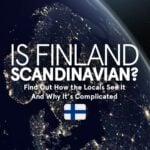 Is Finland Scandinavian? (The Full Answer)
Is Finland Scandinavian? (The Full Answer)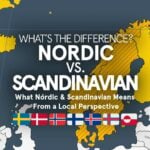 Nordic vs. Scandinavian: Meaning & Usage Explained
Nordic vs. Scandinavian: Meaning & Usage Explained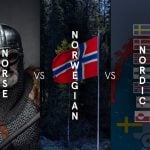 Norse vs. Norwegian vs. Nordic: Differences Explained
Norse vs. Norwegian vs. Nordic: Differences Explained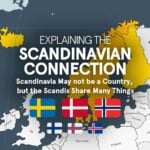 Is Scandinavia a Country? The Scandinavian Connection Explained
Is Scandinavia a Country? The Scandinavian Connection Explained

